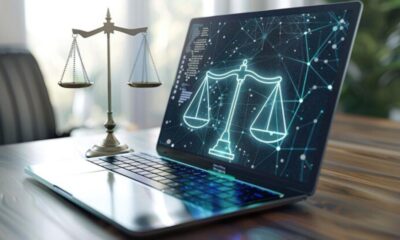General
Hope, Action, and Soul Therapy: A Path to Emotional Healing

Hope is a powerful force that shapes how we perceive the world and approach our struggles. It’s often said that where there’s hope, there’s a way. But hope on its own isn’t enough. Hope needs action to bring about meaningful change. When hope combines with intentional steps, it can lead to profound healing, particularly through methods like soul therapy. In this article, we’ll explore the deep connection between hope, action, and soul therapy—and how they work together to bring emotional healing.
What is Hope?
Hope is an optimistic state of mind that enables us to envision a positive future despite our current circumstances. It’s more than wishful thinking; hope provides the motivation to strive for better outcomes, even when the road seems tough.
The Role of Hope in Emotional Well-Being
Hope is essential for emotional well-being because it helps us move forward, no matter the setbacks. People who hold on to hope are more likely to bounce back from difficulties, face challenges head-on, and maintain a positive outlook. It creates a sense of purpose and direction, vital for mental health.
The Connection Between Hope and Action
Hope alone can feel hollow without action. When we take action toward our goals, hope turns into something tangible. The two work hand in hand to create lasting change.
How Hope Inspires Action
When people have hope, they are more likely to take the necessary steps to improve their situation. It drives motivation and fuels perseverance. Imagine a person who’s trying to overcome a health issue. Hope gives them the strength to seek medical help, adopt healthier habits, and stay consistent with their treatment.
Real-Life Examples of Hope Leading to Positive Changes
Throughout history, many individuals have used hope to achieve extraordinary things. For example, Nelson Mandela maintained hope during his imprisonment, eventually leading to the end of apartheid in South Africa. His hope, combined with action, changed not only his life but the future of an entire nation.
Understanding Soul Therapy
Soul therapy is a holistic approach to emotional healing that focuses on nurturing the inner self. It involves various spiritual and therapeutic practices designed to heal emotional wounds, bring balance, and foster personal growth.
What is Soul Therapy?
At its core, soul therapy helps individuals reconnect with their inner selves through activities like meditation, journaling, or spiritual counseling. It aims to restore emotional equilibrium by healing the soul, rather than just treating the symptoms of emotional distress.
The Purpose of Soul Therapy in Emotional Healing
The goal of soul therapy is to address the deeper issues that often cause emotional pain. By tapping into the soul’s healing powers, individuals can achieve long-term emotional recovery and find inner peace.
The Importance of Emotional Healing
Healing emotionally is crucial for leading a balanced, happy life. Without it, mental health can deteriorate, leading to more severe issues like depression or anxiety. Hope and action play vital roles in the process of emotional healing by providing a roadmap for recovery.
The Role of Hope and Action in Emotional Recovery
Hope gives us the confidence that recovery is possible, while action helps us achieve it. By taking positive steps, we can gradually heal emotional wounds, repair relationships, and improve our overall well-being.
How Hope Influences Soul Therapy
Hope is not only a psychological force but also a spiritual one. In soul therapy, hope serves as a cornerstone for healing because it aligns the mind, body, and soul.
The Spiritual Aspect of Hope
Hope has deep roots in many spiritual traditions. It’s often seen as a gift from a higher power, offering comfort and encouragement during difficult times. In soul therapy, this spiritual dimension of hope helps individuals feel connected to something greater, which in turn accelerates emotional healing.
Incorporating Hope into Soul Therapy Practices
Integrating hope into soul therapy involves intentional activities that cultivate optimism, like practicing gratitude, engaging in creative expression, and surrounding yourself with positive influences. These practices help reinforce the belief that healing is possible.
Practical Steps for Soul Therapy
Soul therapy involves various practical steps that foster healing and self-discovery. Here are some of the most effective methods:
Meditation and Mindfulness
Meditation and mindfulness are powerful tools for grounding the soul and mind. These practices allow individuals to focus on the present moment, releasing negative emotions and fostering inner peace.
Journaling for Emotional Clarity
Writing down your thoughts can be incredibly therapeutic. Journaling helps process complex emotions, making it easier to understand and work through emotional pain.
Creative Outlets for Soul Healing
Engaging in creative activities like painting, music, or writing provides an outlet for emotions that may be difficult to express verbally. These outlets can lead to significant breakthroughs in emotional healing.
Taking Action: The Missing Link
While soul therapy emphasizes inner healing, it requires action to be effective. It’s one thing to reflect on emotions, but another to actively work on healing them.
Why Action is Essential for Lasting Change
Without action, hope and soul therapy may feel incomplete. By taking concrete steps—whether through therapy, personal development, or spiritual practices—you can ensure lasting emotional change.
The Interplay Between Hope and Action in Soul Therapy
Action transforms hope into reality. By engaging with soul therapy practices, you take meaningful steps toward emotional recovery, reinforcing your hope along the way.
Conclusion
Hope, action, and soul therapy together form a powerful framework for emotional healing. Hope gives us the strength to move forward, while action turns that strength into tangible progress. When combined with soul therapy, they provide a holistic path to recovery, helping individuals not only heal but also thrive emotionally and spiritually.
FAQs
- What is the main purpose of soul therapy?
Soul therapy focuses on healing emotional and spiritual wounds by helping individuals reconnect with their inner selves. - How does hope contribute to emotional well-being?
Hope provides motivation and resilience, helping individuals face challenges and move forward in life. - Can soul therapy help with anxiety and depression?
Yes, soul therapy can complement traditional treatments for anxiety and depression by addressing the deeper emotional issues behind these conditions. - How can I incorporate hope into my daily life?
Simple practices like gratitude journaling, mindfulness, and surrounding yourself with positive people can nurture hope in your daily routine. - What are some effective soul therapy practices?
Meditation, journaling, creative expression, and spiritual counseling are all effective ways to engage in soul therapy.
General
Understanding What 17.9 Santigrat Kac Derece: A Complete Guide

Temperature affects us daily, from what we wear to how comfortable we feel indoors or outdoors. But what exactly does a temperature like 17.9°C (64.2°F) represent, and how can we interpret it? This article will explore the context, applications, and impact of 17.9 Santigrat Kac Derece in various settings and its relevance in daily life.
What Does 17.9°C Represent?
Explanation of Celsius as a Temperature Scale
The Celsius scale, developed by Swedish astronomer Anders Celsius in the 18th century, is one of the most widely used temperature scales worldwide. Celsius is based on the freezing point (0°C) and boiling point (100°C) of water under standard atmospheric pressure, making it easy to visualize temperatures we encounter daily.
How to Visualize 17.9°C
To visualize 17.9°C, imagine a crisp, slightly cool day—perfect for light layers but not yet chilly. For reference, standard room temperature is around 20-22°C, so 17.9°C feels a touch cooler than the average indoor setting.
Contextualizing 17.9°C in Different Environments
Indoor vs. Outdoor Temperatures
Indoors, 17.9°C might feel a bit cooler, especially in humid or poorly insulated spaces. Outdoors, this temperature is often associated with early spring or fall days, suitable for lightweight clothing with a possible extra layer for comfort.
Humidity and Wind: Key Factors in Perceived Temperature
Humidity and wind greatly affect how warm or cool a temperature feels. In dry conditions, 17.9°C might feel pleasant and refreshing. With high humidity or wind, however, it could feel cooler, requiring warmer clothing to maintain comfort.
Scientific Background of the Celsius Scale
Origins of the Celsius Scale
Anders Celsius introduced the Celsius scale in 1742. Originally, the scale was inverted, with 0°C as the boiling point and 100°C as the freezing point. This was later reversed to align with natural perception.
Why Celsius is Commonly Used Worldwide
Celsius remains widely used due to its simplicity, particularly for scientific purposes, as it aligns with the metric system, aiding in easy global standardization.
How to Convert Celsius to Other Temperature Units
Conversion to Fahrenheit
To convert 17.9°C to Fahrenheit, use the formula:
(17.9 × 9/5) + 32 = 64.2°F
So, 17.9°C equals about 64.2°F, which in the U.S. would typically be considered a moderate temperature.
Conversion to Kelvin
For scientific calculations, Celsius is often converted to Kelvin, where 0°C equals 273.15 K.
17.9 + 273.15 = 291.05 K
Comparing 17.9°C to Other Common Temperatures
Comfortable Room Temperature
Standard room temperature, around 20-22°C, is slightly warmer than 17.9°C. This means that, indoors, 17.9°C might feel a bit brisk, prompting many to reach for a sweater or light blanket.
Seasonal Temperatures (Spring, Fall)
This temperature is often encountered in spring or fall, times of year marked by moderate warmth and mild coolness. It’s a temperature commonly found in temperate regions during the change of seasons.
Practical Implications of 17.9°C
Impact on Clothing Choices
At 17.9°C, layering is often best. A light jacket, sweater, or comfortable layering options allow flexibility, especially outdoors, where temperatures can fluctuate based on sun exposure or wind.
Effects on Health and Comfort
17.9°C can be ideal for physical activity, as it’s not too warm to cause overheating, yet cool enough to keep people comfortably energized.
17.9°C and Global Climate Variations
How Different Regions Experience 17.9°C
Regions with varying climates will perceive 17.9°C differently. For instance, in tropical zones, this might be a rare, chilly evening, while in temperate regions, it’s more typical and considered mild.
17.9°C in Urban vs. Rural Settings
Cities, with concrete structures and vehicle emissions, may feel slightly warmer at 17.9°C compared to rural areas. The lack of natural surroundings in cities can make temperatures feel intensified due to heat absorption.
Effect of 17.9°C on Daily Activities
Sports and Outdoor Recreation
Mild temperatures like 17.9°C are ideal for running, hiking, or casual walks, allowing for comfortable movement without the risk of overheating.
Productivity and Indoor Comfort
Indoors, slightly cooler air can stimulate focus and productivity. At 17.9°C, people tend to feel awake and alert, which may improve work performance.
Weather and Seasonal Patterns Around 17.9°C
Typical Weather Conditions for 17.9°C
Typical weather patterns at this temperature often feature clear or partly cloudy skies, making for pleasant days or cool, refreshing evenings.
Seasonal Patterns and How They Affect This Temperature
In spring and fall, temperatures often linger around 17.9°C during morning or evening hours, offering a gentle introduction to seasonal changes.
Benefits of Maintaining 17.9°C Indoors
Energy Efficiency in Homes
Maintaining an indoor temperature close to 17.9°C can be energy-efficient, reducing heating costs in cooler months without sacrificing comfort.
Optimal Comfort and Health Benefits
This temperature supports restful sleep and can reduce dry skin caused by excessive indoor heating, especially during colder months.
How 17.9°C Impacts Energy Use and Costs
Comparison of Heating vs. Cooling Needs
At 17.9°C, minimal heating is often required, which saves energy compared to more intense heating or cooling demands.
Cost Efficiency in Different Climates
In moderate climates, maintaining homes close to 17.9°C can lead to lower utility bills. In colder areas, a slight increase in heating may be needed, but costs remain manageable.
17.9°C in Relation to Climate Change
Environmental Impact of Temperature Changes
As global temperatures rise, seasonal temperatures of 17.9°C might shift, affecting ecosystems, plant growth, and weather patterns over time.
Changes in Average Temperature Across Seasons
In many regions, shifts in seasonal temperatures are becoming more noticeable. This can impact the frequency of mild temperatures like 17.9°C as seasonal averages increase.
Practical Tips for Comfort at 17.9°C
Dressing in Layers
Layering is key for temperatures around 17.9 santigrat kac derece especially when moving between indoors and outdoors or in changing weather conditions.
Maintaining Indoor Comfort
Using blankets, light sweaters, or throws can help maintain comfort without needing to adjust thermostats, conserving energy and keeping costs low.
Conclusion
Understanding temperatures like 17.9 Santigrat Kac Derece enhances our ability to prepare for and appreciate different climates and seasons. Whether considering daily activities, energy costs, or personal comfort, 17.9°C remains a versatile and moderate temperature that suits many environments and lifestyles.
FAQs
1. How does 17.9°C compare to typical room temperature?
It’s a few degrees cooler than typical room temperature, which is around 20-22°C.
2. Is 17.9°C a common outdoor temperature?
Yes, it’s common during spring and fall in temperate regions, providing comfortable conditions for outdoor activities.
3. How does humidity affect the feel of 17.9°C?
High humidity can make it feel warmer, while low humidity and wind can make it feel cooler.
4. What is 17.9°C in Fahrenheit?
17.9°C equals approximately 64.2°F.
5. How can I be comfortable at 17.9°C indoors?
Layering, blankets, and moderate heating adjustments can keep you comfortable without excessive energy use.
Business
Discovering Girma Zekpa: A Trailblazer in Business, Education, and Cultural Preservation

Girma Zekpa stands as an inspiring figure whose contributions have significantly impacted business, education, and cultural preservation. His work spans multiple sectors, embodying a commitment to innovation, social progress, and sustainability. Through his initiatives, Zekpa has improved lives, bridged gaps, and inspired communities around the world.
The Early Life of Girma Zekpa
Born into a community rich in cultural heritage, Zekpa’s upbringing was shaped by strong values of education and service. He displayed an early interest in understanding the connections between tradition and modernity, which later informed much of his work.
Zekpa’s Business Innovations
In the business world, Girma Zekpa is celebrated for his forward-thinking approaches. He has founded and managed enterprises that prioritize community development, particularly in underserved areas. His philosophy centers on creating opportunities that benefit both the individual and the collective. Zekpa’s ventures emphasize sustainability, integrating eco-friendly practices into everyday operations【15】【16】.
Revolutionizing Education
Education is a cornerstone of Zekpa’s contributions. Recognizing its transformative power, he has developed programs that improve access to quality learning resources. These initiatives have particularly focused on marginalized groups, equipping them with skills for a rapidly evolving world. He has also championed mentorship programs, helping countless individuals realize their potential【16】.
Cultural Preservation Efforts
Zekpa has worked tirelessly to preserve cultural heritage. Understanding the importance of identity, he has led efforts to document traditions and promote their integration into contemporary practices. This approach ensures that cultural legacies are not only preserved but also remain relevant in modern contexts【16】【17】.
Advocacy for Sustainability
Sustainability is a recurring theme in Zekpa’s work. From championing green business practices to initiating renewable energy projects, he has sought innovative ways to balance progress with environmental stewardship. His work in sustainable agriculture and waste reduction has been particularly impactful【16】【17】.
Technological Empowerment
A key aspect of Zekpa’s legacy is his use of technology to empower communities. By promoting digital literacy and providing access to technological tools, he has opened up new avenues for education and entrepreneurship. His initiatives have helped bridge the digital divide, offering new possibilities to those in resource-limited settings【16】.
Leadership and Mentorship
Zekpa’s leadership style emphasizes empathy, collaboration, and service. He has mentored many individuals, sharing his expertise and encouraging them to pursue impactful careers. His ability to lead by example has earned him respect across industries and communities【16】【17】.
Personal Philosophy and Values
At the heart of Zekpa’s work is a deep commitment to his values—integrity, resilience, and a passion for helping others. His philosophy underscores the power of collective action to drive meaningful change. Zekpa believes in empowering people to be agents of transformation in their communities【16】.
Challenges and Triumphs
Like many innovators, Zekpa has faced challenges, from limited resources to societal barriers. Yet, his resilience and adaptability have enabled him to overcome these obstacles. His achievements are a testament to his dedication to creating lasting impact【16】【17】.
Legacy and Future Vision
Girma Zekpa’s influence continues to grow, with his work serving as a foundation for future generations. As he expands his efforts into new areas, his commitment to education, sustainability, and cultural preservation remains steadfast. His legacy is one of progress and hope【16】.
Conclusion
Girma Zekpa exemplifies the power of vision, determination, and empathy. His journey highlights the profound impact one individual can make across multiple domains. By fostering innovation and inclusivity, he has set a remarkable example for others to follow.
FAQs
1. Who is Girma Zekpa?
Girma Zekpa is a leader, entrepreneur, and advocate dedicated to education, cultural preservation, and sustainability.
2. What is Girma Zekpa’s contribution to education?
He has developed programs to improve access to education and mentorship, especially for marginalized communities.
3. How does Zekpa promote sustainability?
Through initiatives like green business practices, renewable energy projects, and sustainable agriculture, Zekpa integrates environmental stewardship into his work.
4. Why is cultural preservation important to Zekpa?
Zekpa believes cultural heritage is vital to identity and works to document and integrate traditions into modern practices.
5. What is Zekpa’s leadership style?
His leadership emphasizes empathy, collaboration, and mentorship, focusing on empowering others to succeed.
For more insights, explore sources like Dream Heaven and Beverly Adams【15】【16】【17】.
General
The Reign of Stephanie Fuggetta: A Deep Dive into Her Journey and Leadership

Who is Stephanie Fuggetta Reign? A name synonymous with exceptional leadership and transformative influence, Stephanie Fuggetta has carved a niche in her domain. Known for her resilience and innovative strategies, her reign is a testament to how determination and vision can shape the course of history.
Early Life and Background
Childhood and Family Life
Stephanie Fuggetta grew up in a nurturing environment that emphasized education, values, and resilience. Her family instilled a strong work ethic and a desire to make a difference, which laid the foundation for her future endeavors.
Educational Background
Education played a pivotal role in shaping Stephanie’s trajectory. With degrees from prestigious institutions, she excelled in areas that would later underpin her leadership philosophy.
Key Influences in Her Formative Years
Mentorships, early role models, and personal experiences shaped her perspective on leadership, enabling her to think outside the box and challenge the status quo.
MUST READ: Allie Eneix Minnesota: A Story of Inspiration and Dedication
Career Beginnings
First Steps into Leadership
Stephanie’s career began with small yet impactful roles where she demonstrated her ability to lead with empathy and efficiency. These early experiences provided her with invaluable lessons.
Challenges and Early Achievements
Navigating a male-dominated industry, Stephanie faced numerous challenges but turned them into opportunities. Her innovative problem-solving skills earned her recognition and accolades.
Rising Through the Ranks
Defining Moments in Her Career
Stephanie’s rise was marked by pivotal moments that showcased her strategic acumen. Whether it was steering a failing project to success or mentoring a team to achieve their best, her actions left a mark.
Leadership Philosophy
At the heart of her reign is a leadership style rooted in collaboration, inclusivity, and vision. She believed in empowering others, fostering growth, and creating sustainable change.
Impact on Organizational Culture
Stephanie’s presence transformed workplaces into hubs of innovation and inclusivity. Her policies encouraged open communication, diversity, and mutual respect.
The Pinnacle of Her Leadership: Stephanie’s Reign
Major Milestones Achieved
From groundbreaking initiatives to setting new benchmarks, Stephanie’s reign was marked by unparalleled achievements. Her ability to anticipate trends and adapt swiftly set her apart.
Strategies that Defined Her Success
Her strategies were a blend of data-driven insights and intuitive decision-making. Stephanie believed in staying ahead of the curve by embracing technology and fostering innovation.
Adapting to Challenges and Changes
The ability to adapt was a hallmark of her leadership. Stephanie navigated economic downturns, technological disruptions, and societal shifts with grace and resilience.
Personal Life and Balance
Family Life
Despite her demanding career, Stephanie prioritized her family. Her ability to maintain a work-life balance inspired many.
Hobbies and Interests
From reading to adventurous travels, Stephanie’s hobbies reflected her dynamic personality and curiosity about the world.
Legacy and Influence
Lasting Impact on Her Field
Stephanie Fuggetta Reign contributions have left an indelible mark on her field. Her methodologies and policies are studied as models of effective leadership.
Testimonials from Colleagues and Peers
Peers often describe Stephanie as a trailblazer and a mentor. Her ability to inspire and lead by example garnered admiration across the board.
Lessons from Stephanie Fuggetta
Key Takeaways from Her Leadership Style
Stephanie’s reign teaches us the importance of vision, adaptability, and empathy. Her focus on fostering talent and innovation offers timeless lessons.
Advice for Aspiring Leaders
“Believe in your vision, empower your team, and never stop learning.” This advice encapsulates Stephanie’s approach to leadership.
Conclusion
Stephanie Fuggetta reign is a masterclass in leadership, innovation, and perseverance. Her journey serves as an inspiration for aspiring leaders and a benchmark for excellence.
FAQs
- Who is Stephanie Fuggetta?
Stephanie Fuggetta is a renowned leader known for her transformative impact in her field and innovative leadership strategies. - What are her notable achievements?
Her reign includes groundbreaking initiatives, fostering inclusivity, and achieving significant organizational milestones. - What makes her leadership unique?
Stephanie’s leadership emphasizes collaboration, adaptability, and a vision-driven approach. - How can we apply her lessons to our lives?
By embracing empathy, adaptability, and continuous learning, anyone can adopt Stephanie’s principles for success. - Where can I learn more about her?
Look for books, interviews, and case studies highlighting her career and achievements.
-

 Technology10 months ago
Technology10 months agoFacilities That Use Cutting-Edge Medical Technology for Intubation
-

 General10 months ago
General10 months agoCask Technologies LLC Lawsuit: An In-Depth Look into the Legal Battle
-

 Technology10 months ago
Technology10 months ago4416-4420 Technology Drive, Fremont, CA 94538: A Hub of Innovation and Growth
-

 Games10 months ago
Games10 months agoThe Ultimate Guide to Appfordown Games
-

 Technology10 months ago
Technology10 months agoRevo Technologies Murray, Utah: A Leader in Innovative Solutions
-

 Crypto10 months ago
Crypto10 months agoCrypto-Legacy.App Software: Revolutionizing Cryptocurrency Management
-

 Entertainment10 months ago
Entertainment10 months agoThe Ultimate Guide to Rear Seat Entertainment Systems
-

 Games8 months ago
Games8 months agoVanessa-Casino.com Mystical Card Game: A Journey into Enchantment
